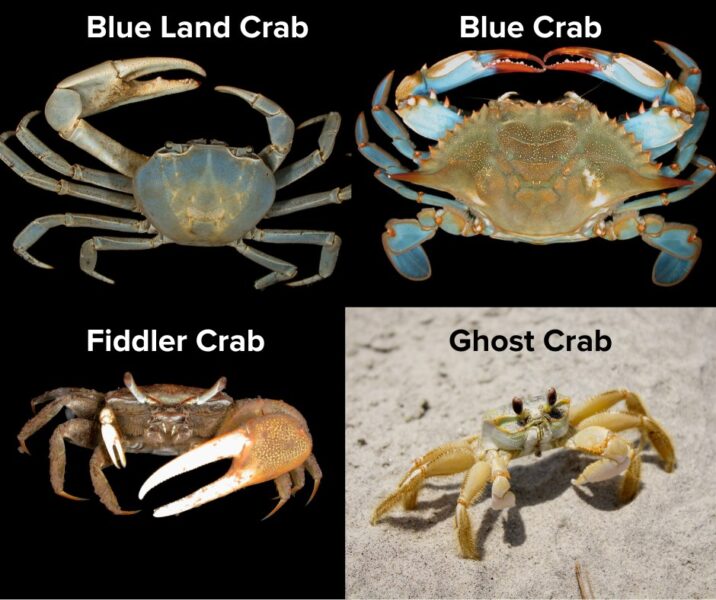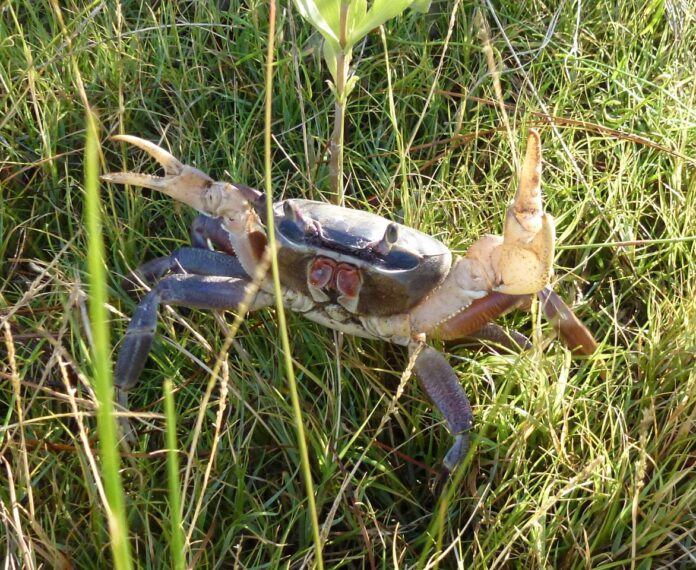The South Carolina Department of Natural Resources is asking for the public’s assistance in locating blue land crabs that are not native to the state.
According to a July 19th Facebook post, these crabs are native to the coast from Brazil to South Florida. They have shown up in South Carolina backyards, fields, and heavily trafficked urban streets.
“A wet summer may be pushing non-native blue land crabs out of their burrows along the coast,” the SCDNR post says.
The SCDNR says these crabs are comparable in size to native land crabs in the state, but range widely in color, from orange to gray to bright purple. Their origins and impact in South Carolina are not yet understood.
Occasional sightings of the large crabs have been reported in South Carolina since 2008. Researchers do not yet know the extent of the crab’s distribution in South Carolina nor its impact on the environment and other wildlife. Whether the species arrived through natural expansion of its range or human-mediated sources is also not clear.

According to the agency, SCDNR staff are working to learn more about where these crabs are located in South Carolina, and information from public sightings has already been tremendously helpful.
Adult males tend to have the characteristic blue-gray coloring, but females can also be white or ash-gray, and juveniles can range from orangish to dark brown to purple. They’re also unusually long-lived and slow-growing among crabs, reaching maturity at four years of age and surviving up to eleven years.
Males can be differentiated from females by the shape of the ‘apron’ on their undersides. Males have a thin, pointy apron, while females have a wide, domed apron.
Blue land crabs are eaten in some parts of their native range, but they’re difficult to catch. In addition to their speed at retreating into burrows deep below ground, the crabs possess a large claw that they can use to dexterously defend themselves.
If you see one of these crabs, SCDNR biologists encourage you snap a photo and report your sighting
If you see one while you’re out and about exploring our beautiful coast, report it to https://survey123.arcgis.com/share/73155cf36b124961a366a8b116147a54?










